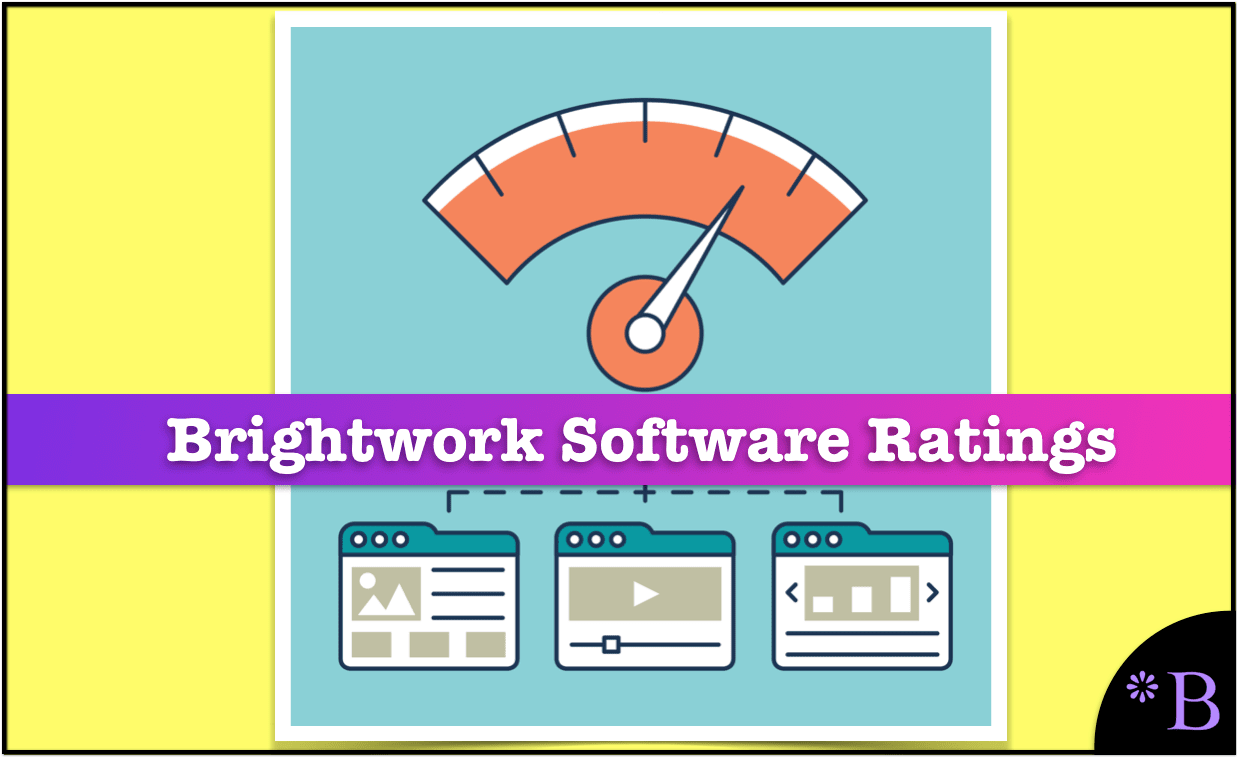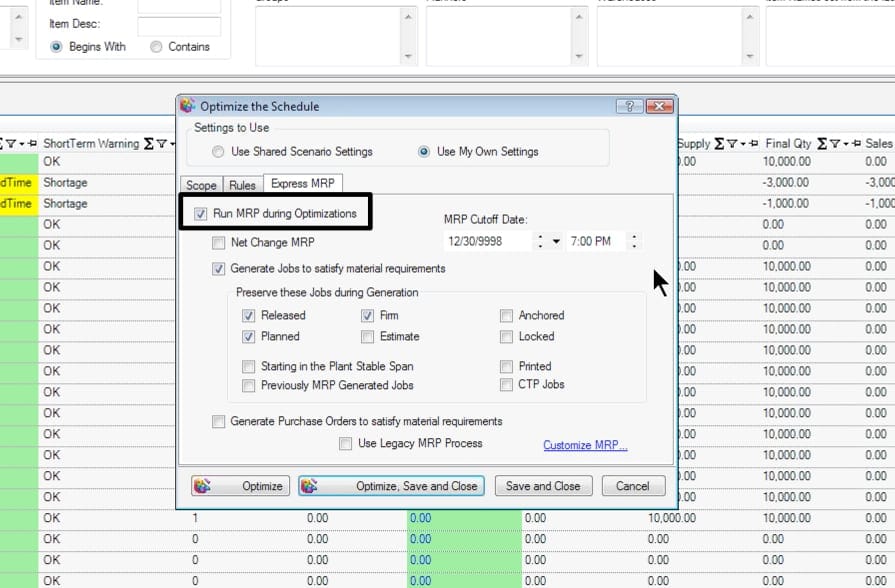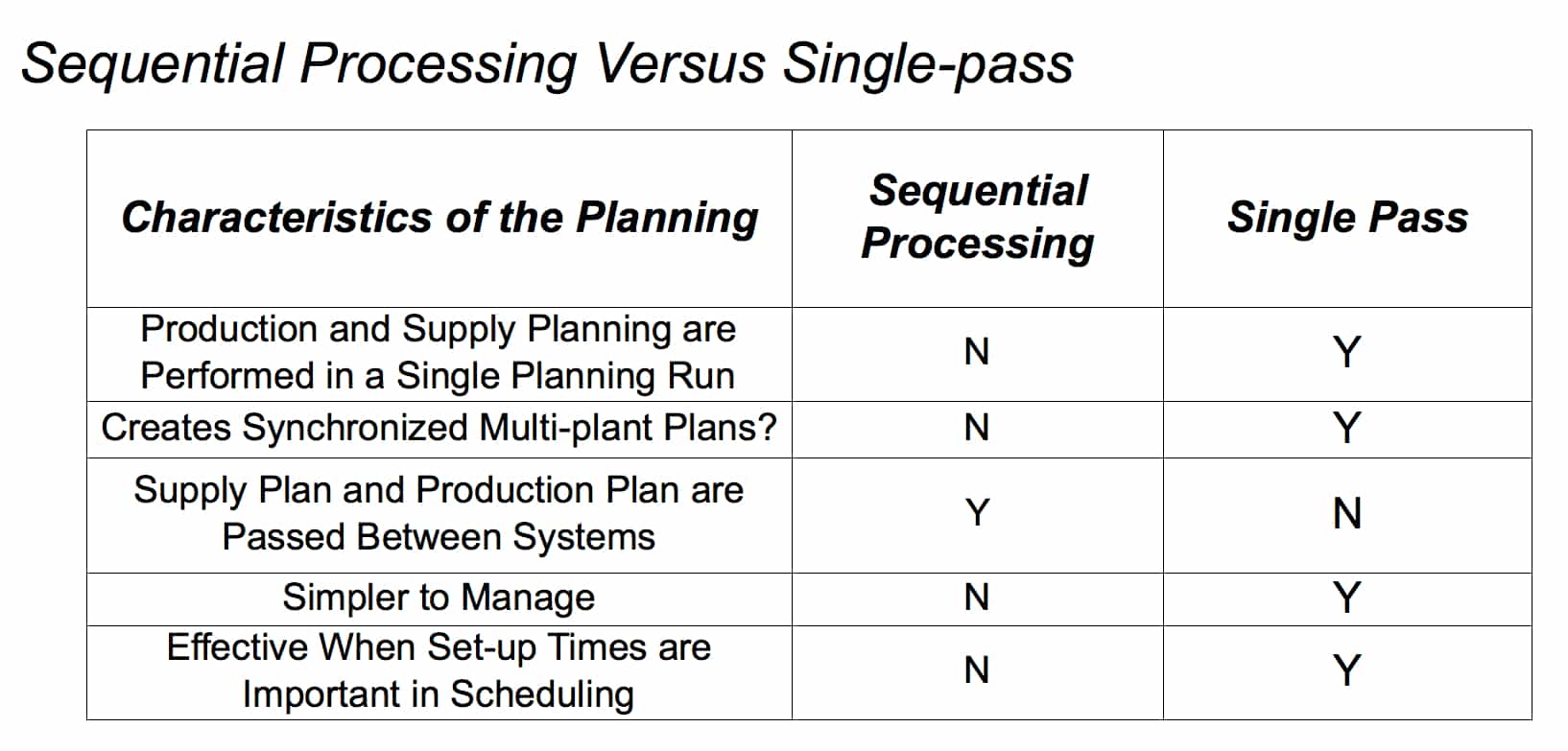Executive Summary
- This is the Brightwork Research & Analysis software rating series.
- We rate both the software and estimate the risk of implementing each application.
MUFI Rating & Risk for PlanetTogether Galaxy APS Superplant
MUFI: Maintainability, Usability, Functionality, Implement ability
Vendor: PlanetTogether Galaxy APS (Select For Vendor Profile)
Introduction
PlanetTogether has created a substantial portion of the overall applied innovation in production planning and scheduling over the past ten years. PlanetTogether is known as a production planning and scheduling software vendor. However, PlanetTogether’s Galaxy APS has a supply planning functionality that no other software vendor presently offers. This feature is of interest to buyers that manage multiple plants in a way that the plants feed one another as if the overall complex were part of a single “Superplant.”
Application Detail
Galaxy APS is not an easy application on which to write. This is because it contains so much functionality, and this functionality is so unique in its design. Even many of PlanetTogether’s current customers do not know what the application can do because its functionality is so deep that a buying company may only be deploying a small fraction of Galaxy APS’s functionality. The entry of PlanetTogether in our Software Selection Package for Production Planning covers the Galaxy APS functionality in more detail. However, some of the distinct Galaxy APS functionalities are the following:
- The only multi-plant planning applications (this means the ability to plan multiple plants as if they are one location) that naturally accounts for lead times between locations.
- Multi-User – any user can plan any plant or groups of plants that they have the authority to plan.
- A leading edge duration based optimizer – combined with the ability to prioritize almost any KPI (that is to adjust the duration optimizer by KPIs – including financial KPIs – meaning Galaxy APS is the only system allowing production to be optimized with throughput accounting principles. Galaxy has 30+ manufacturing based KPI, including cost & profit KPI that are tracked within and across any number of scenarios.
- Has functionality to use a “synchronous manufacturing” approach with strategic buffer management at key control points to protect against the inevitable variation of manufacturing’s reality.
- Galaxy APS not only has the best master data management and update capabilities in its software category, but it is also one of the best master data management and update capabilities that we have measured of any enterprise software application.
- Co-Pilot. Galaxy APS has developed an automated system for simulation that merely runs in the background when processing is available and comes up with improved solutions. This Co-Pilot functionality can run at any time – and may run intensively overnight testing many different combinations. This is we believe an entirely new concept – and is a vast improvement for the vast majority of companies that lack time to perform simulation through other approaches.
Galaxy APS is a compelling application for those buyers that wish to take a “production first” approach their supply planning. This tends to be disregarded when comparing supply-planning (and production planning) applications.
However, one of the most important distinctions between supply planning applications is how it treats production planning. Some applications, such as ToolsGroup SO99 and SAP SmartOps do not deal with production planning at all. Other applications, like SAP SNP, actually allow production planning to be incorporated into the supply plan through the introduction of production resources into SAP SNP. SAP salespeople present this as “accounting for production,” but in fact, this design places supply planning in front of production planning. The first step is to run the supply plan, which is then passed to the production planning application, where more detailed production planning takes place. I quote from the Brightwork Research & Analysis Press book Superplant: Creating a Nimble Manufacturing Enterprise with Adaptive Planning Software.
“Supply Planning First” Two-pass Approach
In the sequential “supply planning first design,” cross-plant interactions are only observed and planned in the supply planning system—in this case, SNP. The supply plan is passed to PP/DS. PP/DS then creates planned orders from the first time bucket in the planning horizon out until the end of the production-planning horizon. While this production-planning horizon can be set to any value, in practice, it tends to be a matter of weeks. As such, in this design the supply planning system is in control of most of the combined supply and production-planning horizon, and essentially gets the first crack at processing the demand. Remember that most companies will have SNP use production resources, so SNP is creating the initial production plan. However, PP/DS will adjust the initial production plan provided by SNP for what are two to four weeks of the PP/DS production horizon, and detailed scheduling is performed down to the level of detail of the hour.
Galaxy APS creates both the supply planning recommendations and the manufacturing recommendations in a “single pass” or a single optimized planning run. Galaxy APS can either run MRP after the optimization—which would be two-step or multi-pass planning. But it can also run MRP during the optimization. The setting for controlling this is shown in the following screen shot.
Galaxy APS uses MRP to actually create the purchase requisitions and stock transfers—but this is based upon the optimizer output and can be set as part of a single planning run.
This approach can be superior to the sequential approach (where supply planning releases its results to production planning) in several ways. First, a combined run can allow an application to do things like multi-plant planning (such as compare all the alternate paths, including those that span a plant). Secondly, the supply plan is accurate right off the bat, and does not have to be passed to a production-planning tool for adjustment. This eliminates disconnects between the supply planning system and the production planning system, which are described in this article.
There are, however, trade-offs between two-pass and single-pass planning. Which approach is a better fit depends upon the objectives of the specific client. Most supply and production applications do not provide the option of either a single-pass or sequential processing, so in most cases the issue cannot even be brought up.
Single-pass Planning with PlanetTogether
Galaxy APS can combine supply and production planning into a single run. The steps are described below:
- The user clicks “Optimize.”
- The plan and schedule are created from independent demands all the way down through production scheduling and purchasing in one shot.
Hopefully, this has explained that PlanetTogether Galaxy APS is necessarily an easy decision when the orientation of the buyer is to place production planning as a primary focus of the supply planning process. It takes much more than merely including production resources into the supply planning system to adequately account for production. For those buyers that want to manage their production plants as part of an integrated whole, there is no other application that can do this, and account for all of the interactions between the locations outside of Galaxy APS.
MUFI Scores
All scores out of a possible 10.
MUFI Scores
- Ma. = Maintainability
- Us. = Usability
- Fu. = Functionality
- Im. = Implementability
| App | Ma. | Us. | Ft. | Im. | Cat. |
|---|---|---|---|---|---|
| Average Score for Big ERP | 5.1 | 4.8 | 5.2 | 5.4 | Big ERP |
| Average Score for CRM | 6.2 | 6.2 | 5.1 | 5.9 | CRM |
| Average Score for Small and Medium ERP | 8.3 | 8 | 6.7 | 8.5 | Small and Medium ERP |
| Average Score for Finance | 8.8 | 8.8 | 8 | 8.8 | Finance |
| Average Score for Demand Planning | 7.6 | 7.2 | 7 | 7.1 | Demand Planning |
| Average Score for Supply Planning | 6.7 | 6.9 | 7 | 6.8 | Supply Planning |
| Average Score for Production Planning | 6.8 | 6.9 | 7 | 6.9 | Production Planning |
| Average Score for BI Heavy | 5.5 | 5.3 | 6.9 | 5.3 | BI Heavy |
| Average Score for PLM | 7 | 7.2 | 6.8 | 7.3 | PLM |
| Average Score for BI Light | 7.7 | 8.7 | 9 | 8.3 | BI Light |
| Arena Solutions Arena PLM | 10 | 10 | 10 | 10 | PLM |
| AspenTech AspenOne | 4 | 8 | 10 | 7 | Production Planning |
| Birst | 8 | 8.5 | 10 | 8 | BI Light |
| ERPNext | 10 | 10 | 7.5 | 10 | Small and Medium ERP |
| Delfoi Planner | 8 | 6 | 6.5 | 7 | Production Planning |
| Demand Works Smoothie SP | 9 | 10 | 7 | 10 | Supply Planning |
| Hamilton Grant RM | 10 | 9 | 8.5 | 9 | PLM |
| IBM Cognos | 2.7 | 3 | 1.5 | 3 | BI Heavy |
| Infor Epiphany | 7 | 8 | 6 | 5 | CRM |
| Infor Lawson | 8 | 7 | 6 | 7 | Big ERP |
| Intuit QuickBooks Enterprise Solutions | 9 | 9 | 5 | 9 | Finance |
| JDA DM | 9 | 7.5 | 8 | 8 | Demand Planning |
| Microsoft Dynamics CRM | 2 | 3 | 2 | 2 | CRM |
| NetSuite CRM | 6 | 4 | 3 | 3 | CRM |
| Netsuite OneWorld | 7 | 7 | 8 | 8 | Big ERP |
| OpenERP | 7 | 8 | 8.5 | 8 | 7 |
| Oracle BI | 4 | 4 | 3 | 6 | BI Heavy |
| Oracle CRM On Demand | 4 | 5 | 3 | 5 | CRM |
| Oracle Demantra | 5 | 3 | 3.5 | 4.5 | Demand Planning |
| Oracle JD Edwards World | 4 | 1 | 3 | 6 | Big ERP |
| Oracle RightNow | 6 | 7 | 4 | 5 | CRM |
| PlanetTogether Galaxy APS | 10 | 10 | 10 | 10 | Production Planning |
| Preactor | 8 | 7 | 3 | 7 | Production Planning |
| QlikTech QlikView | 9 | 9 | 10 | 9 | BI Light |
| Rootstock | 9 | 8 | 9 | 9 | Small and Medium ERP |
| Sage X3 | 8 | 8 | 7 | 8 | Big ERP |
| Salesforce Enterprise | 8 | 8.5 | 9 | 7.5 | CRM |
| SAP APO DP | 3 | 4 | 3 | 2 | Demand Planning |
| SAP APO PP/DS | 2 | 2 | 4 | 3 | Production Planning |
| SAP APO SNP | 3 | 4 | 8 | 4 | Supply Planning |
| SAP BI/BW | 1.5 | 2 | 4 | 2 | BI Heavy |
| SAP Business Objects | 3 | 2.5 | 7 | 3 | BI Heavy |
| SAP CRM | 4 | 3 | 6 | 4 | CRM |
| SAP ECC | 3 | 3 | 6.5 | 3 | Big ERP |
| SAP PLM | 1 | 2.5 | 2 | 3 | PLM |
| SAP SmartOps | 4 | 4 | 7 | 5.5 | Supply Planning |
| SAS BI | 6.5 | 7 | 9 | 6 | BI Heavy |
| SAS Demand Driven Forecasting | 7 | 8 | 9 | 7 | Demand Planning |
| Tableau (BI) | 9 | 10 | 10 | 10 | BI Light |
| Tableau (Forecasting) | 10 | 8 | 5 | 9 | Demand Planning |
| Teradata | 8 | 6.3 | 9.7 | 6 | BI Heavy |
| ToolsGroup SO99 (Forecasting) | 7 | 8 | 9 | 7 | Demand Planning |
| ToolsGroup SO99 (Supply) | 5 | 6 | 10 | 7 | Supply Planning |
Vendor and Application Risk
Buyers of Galaxy APS have every possible advantage working their direction. Galaxy APS is one of the highest rated applications we have ever rated. It is a rare situation where a buyer has the opportunity to purchase software that is both the functionality leader in its category, along with being highly implementable and user-friendly.
Likelihood of Implementation Success
This accounts for both the application and vendor-specific risk. In our formula, the total implementation risk is application + vendor + buyer risk. The buyer specific risk could increase or decrease this overall likelihood and adjust the values that you see below.
Likelihood of Application Implementation Success and Failure
Search for the application in this table using the search bar in the upper right of the table.
| Application | Prob of Implementation Success | Prob of Implementation Failure |
|---|---|---|
| Actuate | 0.77 | 0.23 |
| SAP Smartops | 0.39 | 0.61 |
| NetSuite CRM | 0.46 | 0.54 |
| Sugar CRM | 0.62 | 0.48 |
| Base CRM | 0.91 | 0.09 |
| SAP CRM | 0.35 | 0.65 |
| Salesforce Enterprise | 0.72 | 0.28 |
| QlikTech QlikView | 0.82 | 0.18 |
| Tableau (BI) | 0.98 | 0.02 |
| SAP Crystal Reports | 0.46 | 0.54 |
| Brist | 0.83 | 0.17 |
| MicroStrategy | 0.7 | 0.3 |
| SAS BI | 0.76 | 0.24 |
| Oracle BI | 0.35 | 0.65 |
| IBM Cognos | 0.23 | 0.77 |
| Infor Epiphany | 0.58 | 0.42 |
| Microsoft Dynamics CRM | 0.26 | 0.74 |
| Oracle RightNow CRM | 0.41 | 0.59 |
| Oracle CRM On Demand | 0.36 | 0.64 |
| Teradata | 0.76 | 0.24 |
| SAP Business Objects | 0.32 | 0.68 |
| SAP BI/BW | 0.25 | 0.75 |
| SAP PLM | 0.29 | 0.71 |
| Hamilton Grant RM | 0.89 | 0.11 |
| Arena Solutions | 0.96 | 0.04 |
| Delfoi Planner | 0.7 | 0.3 |
| Preactor | 0.64 | 0.36 |
| PlanetTogether Galaxy APS | 0.96 | 0.04 |
| AspenTech AspenOne | 0.55 | 0.45 |
| SAP APO PP/DS | 0.27 | 0.73 |
| Demand Works Smoothie SP | 0.93 | 0.07 |
| ToolsGroup SO99 (Supply) | 0.82 | 0.18 |
| Demand Works Smoothie | 0.96 | 0.04 |
| Tableau (Forecasting) | 0.9 | 0.1 |
| SAS Demand Driven Forecasting | 0.82 | 0.18 |
| ToolsGroup SO99 (Forecasting) | 0.86 | 0.14 |
| JDA DM | 0.57 | 0.43 |
| Oracle Demantra | 0.33 | 0.67 |
| SAP APO DP | 0.28 | 0.72 |
| FinancialForce | 0.92 | 0.08 |
| Intacct | 0.98 | 0.02 |
| Intuit QB Enterprise | 0.8 | 0.2 |
| ERPNext | 0.9 | 0.1 |
| OpenERP | 0.78 | 0.22 |
| Rootstock | 0.91 | 0.09 |
| ProcessPro | 0.93 | 0.07 |
| Microsoft Dynamics AX | 0.4 | 0.6 |
| SAP Business One | 0.49 | 0.51 |
| Sage X3 | 0.62 | 0.38 |
| Infor Lawson | 0.58 | 0.42 |
| Epicor ERP | 0.4 | 0.6 |
| Oracle JD Edwards World | 0.31 | 0.69 |
| Oracle JD Edwards EnterpriseOne | 0.36 | 0.64 |
| SAP ERP ECC/R/3 | 0.32 | 0.68 |
| NetSuite OneWorld | 0.65 | 0.35 |
Risk Definition
See this link for more on our categorizations of risk. We also offer a Buyer Specific Risk Estimation as a service for those that want a comprehensive analysis.
Risk Management Approach
The only implementation issues that a buyer of Galaxy APS can expect the fact are the traditional issues that face production planning and scheduling projects. PlanetTogether has tended to be implemented by smaller companies – the only reason being they do not have the brand recognition of being associated with a primary software vendor. As such they have become acclimated to having their software implemented in clients with quite limited resources. However, they have recently completed a 28 plant implementation, and this has demonstrated PlanetTogether’s ability to handle larger clients.
We predict PlanetTogether will eventually be recognized for its excellent software and will become a significantly bigger company and will be implemented by larger buyers, buyers with much more resources. A Galaxy APS implementation is one that any project manager should look forward to, as it has a high likelihood of adding significant value to the buyer.
Finished With Your Analysis?
To go back to the Software Selection Package page for the Supply Planning software category. Or go to this link to see other analytical products for PlanetTogether Galaxy APS.


